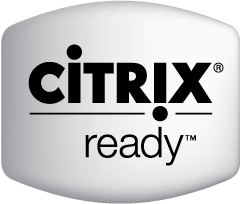Time is an important measurement of IT service, especially we use transaction time. Time is well understood and begins to answer some of the fuzzy questions such as slowness and what is performance. Of course there are other great questions in IT and one of the most dreaded is: ‘How much does this application cost?’ This question creates countless man hours of work quickly running into the diminished returns of hours spent vs. accuracy. Here is an enumerated example:
1. The cost of the actual application (license, lease etc.) + depreciation as appropriate.
2. The cost of maintenance agreements.
3. The cost of the man power supporting the application (often fractions of various head count.)
4. The cost of the dedicated hardware supporting the application.
5. The proportion cost of shared hardware and software such as Databases and SAN space.
6. The proportion cost of network equipment + and then network support hours.
7. The cost of data center space + power + environment.
8. The proportional cost of management.
9. The cost of shared services such as backup and monitoring.
10. …
As you can see this becomes quite a long list and rapidly becomes time intensive. I remember one organization that spent days deciding how to divide the data center power bill into the application numbers. The humorous or sad reality is thousands of dollars of time in meetings was used to shift increments of hundreds of dollars between the applications. What was disturbing is at the end of weeks of work by most of IT is a reasonable number was returned but what it didn’t show was one of the greatest and most forgotten costs of an application, that of user time. There are good reasons for this such as user time is not part of the IT budget or how could we possible calculate that number to any accuracy.
Now that we have a method to understand transaction time we can understand the cost of slow application. A simple formula is the number of transactions * the average transaction time * the cost of loaded headcount per time. This is not perfect nor do I want to make perfection the enemy of good. It is reasonable to say if a user waits more than a minute for a result they start multitasking. This can be corrected by ignoring transactions longer than one minute for this simple formula. There are other exceptions and all can be corrected for but let’s take an example application and figure out some numbers.
We have an application that 600 users use 60 times a day with an average transaction time of 10 seconds. That comes out to 36,000 transactions or 360,000 seconds or 100 hours. HR tells us that our loaded headcount is 40 dollars an hour so we have $4,000 per day of lost time spent waiting for application response. This is a shocking number; it often exceeds the total cost from the tedious exercise of calculating an application cost. Other ways to think of this number are $88,000 per month or 12.5 people doing nothing but waiting every single day.
Fortunately, with information comes opportunity. There are several beneficial ways to use this discovered cost. One way is it may help reluctant organizations understand the importance of IT and good systems. When the cost is presented to the application owner they might want to invest in improving application performance. Assume when looking at the application performance we find most the time is spent in the data base. After a bit of testing we can see a 25% increase of performance by moving to a DB cluster and the cost of doing this is $100,000. Using our $88,000 cost of time per month we calculate the DB improvement pays for its self in 5 months ($88,000 * .25 * 5 = $110,000) in increased productivity.
This number is also a key management number. During the year end budget and priority cycle there are several ways to decide how to assign the all too few resources given to IT. Other than compliance and obsolescence a strong argument is improving what will gain the most productivity and money is the understandable measure to use.
Businesses run by understanding costs. Application management allows IT to start speaking the same language as rest of a company – one of dollars and cents. An old basic business adage is you can’t manage what you don’t measure. Appensure is an example of a time based performance tool that discovers the unknown cost and enables efficient management.




